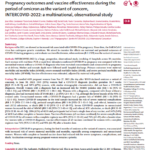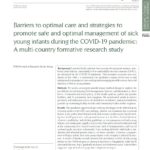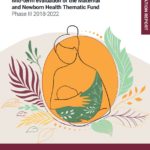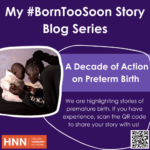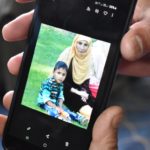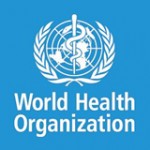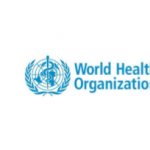COVID-19 disease
According to the World Health Organization, the COVID-19 virus spreads primarily through droplets of saliva or discharge from the nose when an infected person coughs or sneezes. Current evidence indicates that COVID-19 does not appear to directly impact newborns. Few novel coronavirus infections have been reported in newborns, and these were almost uniformly asymptomatic. The few that had symptoms were reported to have mild illness.
There is no evidence of vertical mother-to-newborn transmission during pregnancy or via breastfeeding.
Indirect adverse effects of COVID-19 on pregnancy and newborns
Whereas the direct effects of COVID-19 on pregnancy and newborns are minimal, indirect adverse effects are becoming increasingly apparent and important areas of concern. These include potential disruptions of routine maternal and newborn health (MNH) care that is essential for the health and survival of mothers and newborns. Countries’ responses to the pandemic – such as social distancing measures – can pose threats to continuing best practices by health care providers, as well as to home caregiver practices that are essential to newborn health and survival. Leading examples of these threats to best MNH practices include:
- separation of mothers and newborns instead of promoting immediate skin-to-skin contact and rooming in, in facilities, and
- immediate and exclusive breastfeeding, and Kangaroo Mother Care (KMC) for preterm and small babies.
Thus, pandemic mitigation by social distancing should not result in unintended harm to mothers and their newborns.
There is also a risk to mothers and babies that pandemic responses limit needed psychosocial support to mothers during pregnancy, delivery, and in the postpartum period. Additionally, the economic toll of the pandemic response poses serious risks to many families – especially mothers and newborns – living in poverty or near-poverty. Policies and programs must recognize and take steps to prevent or ameliorate these important risks which may otherwise be overlooked. These can include food insecurity, loss of livelihoods, misinformation, and lockdown-induced social isolation and loss of vital community/family support.
The World Health Organization (WHO) and partners continue to monitor the evidence and provide guidance accordingly.
Key Resources:
- Living guidance for clinical management of COVID-19 (WHO)
- Questions and Answers: COVID-19 vaccines and pregnancy (WHO)
- Navigating pregnancy during the COVID-19 pandemic – How to best protect yourself and your baby (UNICEF)
- Maintaining essential MNCH services during the COVID-19 pandemic: Lessons from 19 countries (WHO)
- View WHO Technical and Country Guidance (WHO)
- COVID-19, pregnancy & childbirth (WHO)
- Guideline for pregnant women with suspected SARS-CoV-2 infection (Lancet)
- Covid-19 Resource Center (Lancet)
- COVID-19 & breastfeeding (WHO)
- Breastfeeding and COVID-19 Scientific Brief (WHO)
- Guidelines for continued newborn healthcare during the COVID-19 pandemic: compiled programmatic information for implementers and project managers (WHO)
- COVID-19 Technical Brief for Antenatal Care Services (UNFPA)
- COVID-19 Technical Brief for Maternal Service (UNFPA)
- Infant and Young Child Feeding Recommendations When COVID-19 is Suspected or Confirmed (USAID, UNICEF & IFE)
- Infant and Young Child Feeding Tools in the Context of COVID-19 (Save the Children)
- Additional resources are regularly updated on the WHO website.
